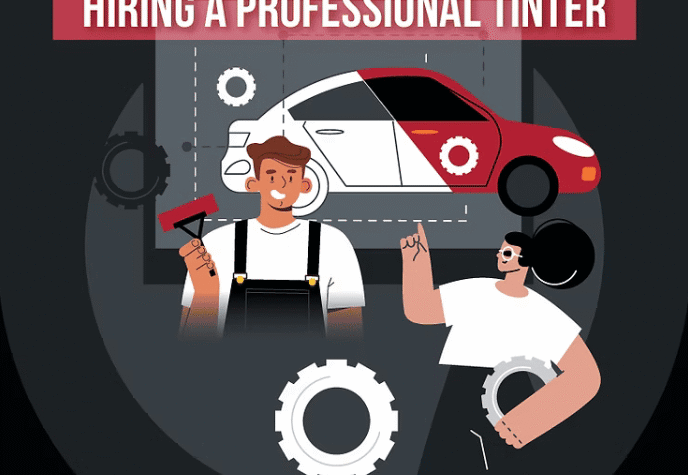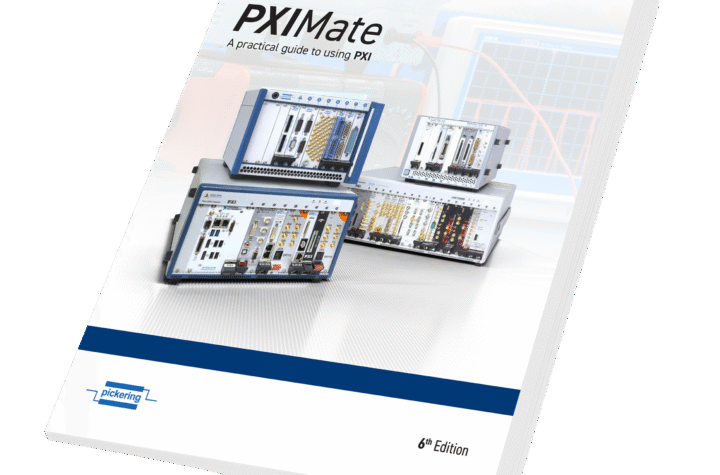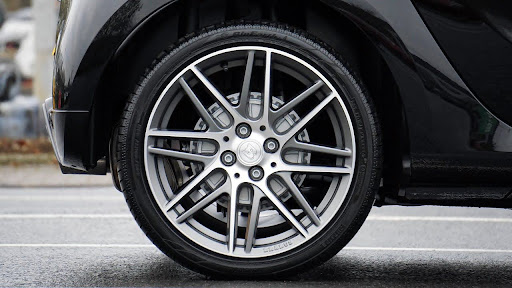
.jpg)
A new motor show is now on the global map after just two editions – organizers, visitors and exhibitors at the 2012 Qatar Motor Show held in January say it is here to stay.
The 2012 Qatar Motor Show also hosted the second Middle East Automotive Summit. Opening the Summit, Ahmed Al Nuaimi, chairman of organizers the Qatar Tourism Authority said: “We aim for the Qatar Motor Show to be a source of inspiration for manufacturers of cars, and to provide a rare and unique experience to automotive lovers.”
The speakers discussed the pressing issues of increasing worldwide road congestion and populations.
Ghanim Bin Saad Al-Saad, chairman of Qatar Ag, said: “Qatar Ag is an attempt at diversification in Qatar, supporting the country in its drive to become a knowledge-based economy as well as create job opportunities for Qatar’s future generations. This initiative will help us put Qatar on the map prominently.”
Automotive Industries (AI) spoke to Roger Abi Haidar, General Manager, q.media events, which co-organized the event. We asked him to rate the success of the 2012 Qatar Motor Show.
Abi Haidar: A bigger, and longer, show was able to attract more than 120,000 enthusiastic visitors as compared to 90,000 for the inaugural edition in 2011. In the run-up to the 2012 Qatar Motor Show edition was an exclusive Ferrari F1 event organized by Shell in partnership with the Qatar Motor Show. For the first time in Qatar, 25,000 motorsport fans were thrilled with a dazzling street demonstration, where Scuderia Ferrari F1 and driver Marc Gené delivered an outstanding performance to spectators and VIPs along the Doha Corniche.
But the 2012 Qatar Motor Show also offered pure entertainment. Thanks to the numerous simulators available at the show, like the locally-designed and engineered Williams immersion formula simulator, the Ford WRC simulator and the Shell Ferrari F1 simulator, visitors were able to virtually experience dynamic and interactive driving. Outdoor areas featured test driving sessions with a star-studded roster of driving instructors, like the Lebanese rally champion and Middle East Hill Climb champion and Red Bull Athlete Abdo Feghali and Marco Giony, professional drift and stuntman.
Crowds also flocked to an exhibition area dedicated to the automobiles conceived, designed, and constructed by Italian firms representing the ultimate in Italian car design: Pininfarina, I.DE.A. Institute, UP Design and Touring Superleggera. Concept cars, super cars, prototypes and special bodies were presented for the first time in Qatar, considered by many as one of the leading markets in the world for luxury and sport cars.
AI: What impact has the international auto show had on Qatar as an automotive destination?
Abi Haidar: The Qatar Motor Show elevated itself not only as an international showcase for the most important brands of automobiles in the world, but also wonderfully entertaining, with competitions, drifting, motocross, and freestyle demonstrations from leading experts and world renowned professional drivers, as well as test drive opportunities for show-goers.
Qatar Motor Show also consolidated its international appeal thanks to the 33 auto brand names present in addition to 10 motorbike brands, many of which chose the Doha Exhibitions Center for some of their regional premières and international debuts.
AI: Tell us a little about your plans for the 2013 edition of the Qatar Motor Show – are you planning an even bigger/ better event?
Abi Haidar: The 2012 Qatar Motor Show built on the success of the first edition in 2011. The latest edition surpassed even our expectations, and we are buoyed with the response of the automotive industry and the end-users. As an event that has garnered a region-wide stature within such a short time, the Qatar Motor Show is here to stay. We have to ensure that the momentum continues to build and we continue to raise the bar for years ahead.
As we look to 2013, we are working to ensure that the Qatar Motor Show remains an outstanding event for automotive sector and consumers, as well as serve as the hub for innovation and research, emerging technologies and solutions for the motor industry.
Automotive Industries asked Damian Scott, general manager, Williams Advanced Engineering (Williams Technology Centre Qatar) to tell us more about the technologies being developed at the Qatar Science and Technology Park.
Scott: In partnership with the Qatar Science & Technology Park, Williams F1 established the Williams Technology Centre, Qatar to develop and commercialize technologies that have their origins in F1. This is currently focused on two R&D projects. The first is the application of Williams’ advanced vehicle simulator technology to develop solutions for training and certification of regular, emergency and commercial drivers to improve road safety and fuel efficiency as well as other motorsports and entertainment. The second is development of high-power composite flywheel energy storage systems that improve the efficiency and reliability of rapid transportation and strengthen electricity grids to support increased renewable generation.
AI: Why did Williams chose to invest in Qatar?
Scott: For a number of compelling reasons: As part of its vision to become a knowledge-based economy, Qatar has created and continues to rapidly develop an environment that is increasingly attractive for high-tech applied research and commercialization operations such as ours. In particular, the Qatar Science & Technology Park is an excellent location and partner providing access to applied research grant funding support, commercialization support and a network of world-class neighbors. Proximity and access to the high quality engineers graduating from the Education City campuses is another draw – we already have a number on our team. Local and regional market access for the output from our applied research and commercialization programme was a key factor. Significant opportunities exist in the mass transit, driver training, entertainment and motorsport development sectors.
AI: Tell us about your company’s participation at the 2012 Qatar Motor Show – how would you rate the experience?
Scott: Williams selected the 2012 Qatar Motor Show to debut the transportable entertainment focused version of its advanced simulator platform, the Immersive Formula Simulator. This was deployed in a large motorsport track themed stand that included a real Williams F1 racing car. As the public debut of our first product engineered entirely (and largely manufactured) in Qatar, the 2012 show was the ideal venue to reveal, demonstrate and showcase this technology to a local and international audience. We brought our Formula One test driver, Valtteri Bottas, out to the show to drive the new simulator and give a few other lucky drivers some expert tips. Overall our experience in participating in the show was a resounding success and look forward to participating in future.
AI: Tell us a little about the other research project Williams Technology has in Qatar – the development of a large composite electromechanical flywheel energy storage system for mass transport.
Scott: Pioneered by Williams F1 for Grand Prix racing, and currently used by Porsche in its 911 GTR R Hybrid, the flywheel energy storage systems being developed at our Technology Centre, address the rapid transit (metros, trams and monorails) and electric power stabilization sectors. When incorporated into rapid transit systems our devices will help improve regenerative braking, increase reliability, reduce electricity consumption and cut infrastructure costs. In an electric power stabilization role, they will be deployed to help smooth output from intermittent renewable generation sources, provide fast response frequency regulation and short term demand peak shaving to help strengthen electricity grids. We have established a collaboration with Siemens in Qatar on the interaction of Mobile Energy Storage Units in light rail systems. We hope to see this technology used in Qatar’s transport and electrical infrastructure helping make it the amongst the world’s most advanced, efficient and environmentally friendly.
Automotive Industries asked Max Renault, program leader, Simulation Systems, Williams Technology Centre Qatar, how the project to commercialize Williams F1’s simulator technology had evolved.
Renault: Our program to commercialize Williams F1’s simulator capabilities is focused on three areas: motorsport development, entertainment and road safety driver training. The Williams Technology Centre in Qatar currently houses the Middle East’s most advanced motorsport simulator, which was locally designed and constructed last year. This simulator is being used by international and local professional or aspiring drivers to hone their racing abilities and realize their potential – helping play an important role in the development of motorsport in Qatar.
The immersive and highly realistic systems are also being adapted and extended for use as a training tool for road-going vehicles. This activity is focused around our programme with Qatar taxi operator Mowasalat in to apply the technology to help improve the safety, environmental efficiency, passenger comfort and cost efficiency of its operations.
AI: What impact has this technology had on automotive manufacturers?
Renault: Advanced simulator technology is increasingly being used and relied on by automotive manufacturers for a variety of tasks from pre-development vehicle dynamics analysis to HMI design. As the complexity of automotive systems and their interactivity with drivers, passengers, other vehicles and the environment increases this will grow. We are in dialogue with multiple automotive OEMs about deploying Williams advanced simulator technology and engineering expertise to help address their needs. This may in future become an important part of our Qatar-based simulator engineering team’s activities.
AI asked Roberto Vavassori, director, business development at Brembo what participation in the Qatar Motor Show had done for the company.
Vavassori: As our very first time it was good to come to this event. True, the absolute dimension of the regional market potential is not comparable to other countries, but it fits very well with our top-of-the-range products, which are proudly displayed on most of the supercar shown here, from luxury sedans to extreme sports cars. Not to mention that the Ferrari F1 running on the Corniche is also using our brakes.
AI: How do you see Qatar emerging as an automotive hub?
Vavassori: Honestly speaking, I see this effort as a very demanding one. Competition from many countries is fierce and several of these advertise their potential and actual advantages boldly. My first impression is that Qatar has nevertheless some aces to play. These include relatively cheap energy, the financial capacity to support investments, and very good connections to the western auto industry. A tailored-made strategy based on these fundamentals could prove viable, perhaps with a focus on innovative technologies, where the games ar e not yet fully deployed.
AI: Does your company have any plans to invest in the country?
Vavassori: Too early to assess, but I would not discard to consider a reasonable plan for the most hi-tech and advanced part of Brembo’s portfolio palette.
AI asked Andrew Brown, EVP, MD Shell Pearl GTL, to tell us about his company’s participation in the Qatar Motor Show as a Diamond Sponsor.
Brown: Shell is proud to be able to support Qatar Motor Show in its aspiration to build an international brand. We hosted the first ever Ferrari street demonstration in the Corniche of Doha as a grand preamble for the opening of QMS and closed our participation with the announcement of eight winners who got the chance to go on an all-expense-paid trip to Abu Dhabi to visit Ferrari World.
The Shell stand attracted over 12,000 visitors, and featured different aspects of Shell’s technology and innovation and focus on efficiency and smarter mobility. It also focused on Shell’s long-term technical partnership with Scuderia Ferrari, which is one of the most successful and long-standing partnerships in Formula One history. Shell has powered Scuderia Ferrari for 60 years, leading up to 10 Constructors’ and 12 Drivers’ Formula One World Championship Titles. Most of the visitors tried to harness the power of a Formula One car on track driving Shell’s Ferrari professional simulator, hoping to set the fastest lap time on the virtual version of Abu Dhabi’s Yas Marina Circuit.
Shell invests 21,000 man hours of research and development per year into its program with Ferrari. Over 50 Shell technical staff work with Ferrari based in Shell technical facilities in the UK, Germany and in Maranello.
AI: What impact has your gas to (liquids) (GTL) plant in Qatar had on the move to promote natural gas as transportation fuel?
Brown: We are clearly on a journey with our main partner Qatar Petroleum, jointly developing the largest gas to liquids plant in the world – Pearl GTL – and reaching the world with the most innovative products from Qatar. Pearl GTL is expected to produce a number of high-quality GTL products for sale in oil product markets around the world: GTL Kerosene for blending into a clean burning aviation fuel; GTL Gasoil, a clean-burning diesel-type automotive fuel; and GTL Base Oils for premium lubricants. Besides transportation, other products include GTL Normal Paraffin for detergents, and GTL Naphtha, a high-paraffin feedstock for the petrochemical industry.
So in addition to being a uniquely innovative way of monetizing gas resources by chemically converting gas into high quality liquid products, Pearl GTL produces alternative cleaner burning transportation fuels and lubricants that are cleaner-burning compared to their conventional counterparts. GTL gas oil can contribute to the diversification of the diesel fuel supply and reduce local emissions (NOx, SOx and particulate matter), contributing to improved local air quality by reducing local emissions. It can be blended with conventional diesel and/or biodiesel and used in the same vehicles and infrastructure. It is therefore a low investment cost compared with other alternatives on the market. It can be effortlessly integrated into existing fleet operations. It burns more efficiently than conventional oil-based diesel so produces fewer local emissions and less visible black smoke when burned than conventional diesel. This is because it contains virtually no sulfur or aromatic compounds and has a high cetane number (a measure of combustion quality). When in full capacity, Pearl GTL will produce enough gasoil to fill 160,000 cars per day.
GTL kero is an alternative to conventional oil-based kerosene. Its primary use is expected to be for aviation, contributing to the diversification of the aviation fuel supply. From 2012, Pearl GTL is expected to produce around 25,000 barrels per day of GTL kerosene. GTL kerosene can be used as a blend with traditional jet fuel without any modifications to existing aircraft and engines. GTL kerosene burns with virtually zero sulphur dioxide and produces lower particulate emissions than conventional oil-based kerosene. This means it can be attractive for helping to improve air quality at busy airports by reducing local emissions. GTL kerosene has higher energy density than conventional oil-based kerosene, which reduces the required fuel payload and aircraft may be required to carry less weight of fuel to cover the same distance. Shell, Qatar Airways, Qatar Petroleum, WOQOD, Airbus, Rolls-Royce and the Qatar Science and Technology Park (QSTP) continue to research the potential benefits of synthetic aviation fuel in aviation engines.
GTL base oils are an alternative starting point for the manufacture of finished lubricants, which help keep vehicle engines, gearboxes and transmissions operating smoothly. We are updating existing premium formulations to use GTL base oil and developing our next generation premium oils to use the high quality GTL base oil. Shell has been making high quality GTL base oils commercially at our GTL plant in Bintulu, Malaysia, since 1993. Following ramp up, the Pearl GTL project will be one of the world’s largest sources of lubricant base oil with the capacity to produce about 30,000 barrels per day, enough to fill 225 million cars per year. There is growing global demand for synthetic base oils (5-10%) compared to overall base oil demand growth (1-2%). Shell is global market share leader for finished lubricants and will use GTL base oils from Pearl GTL to formulate Group III finished lubricants that address needs for improved energy efficiency, longer equipment life and reduced maintenance costs.












More Stories
Professional vs. DIY Tinting: What You Should Know
New updated edition of “PXIMate” reference guide for T&M engineers available from Pickering Interfaces
5 Mistakes That Can Ruin Your Car Accident Claim